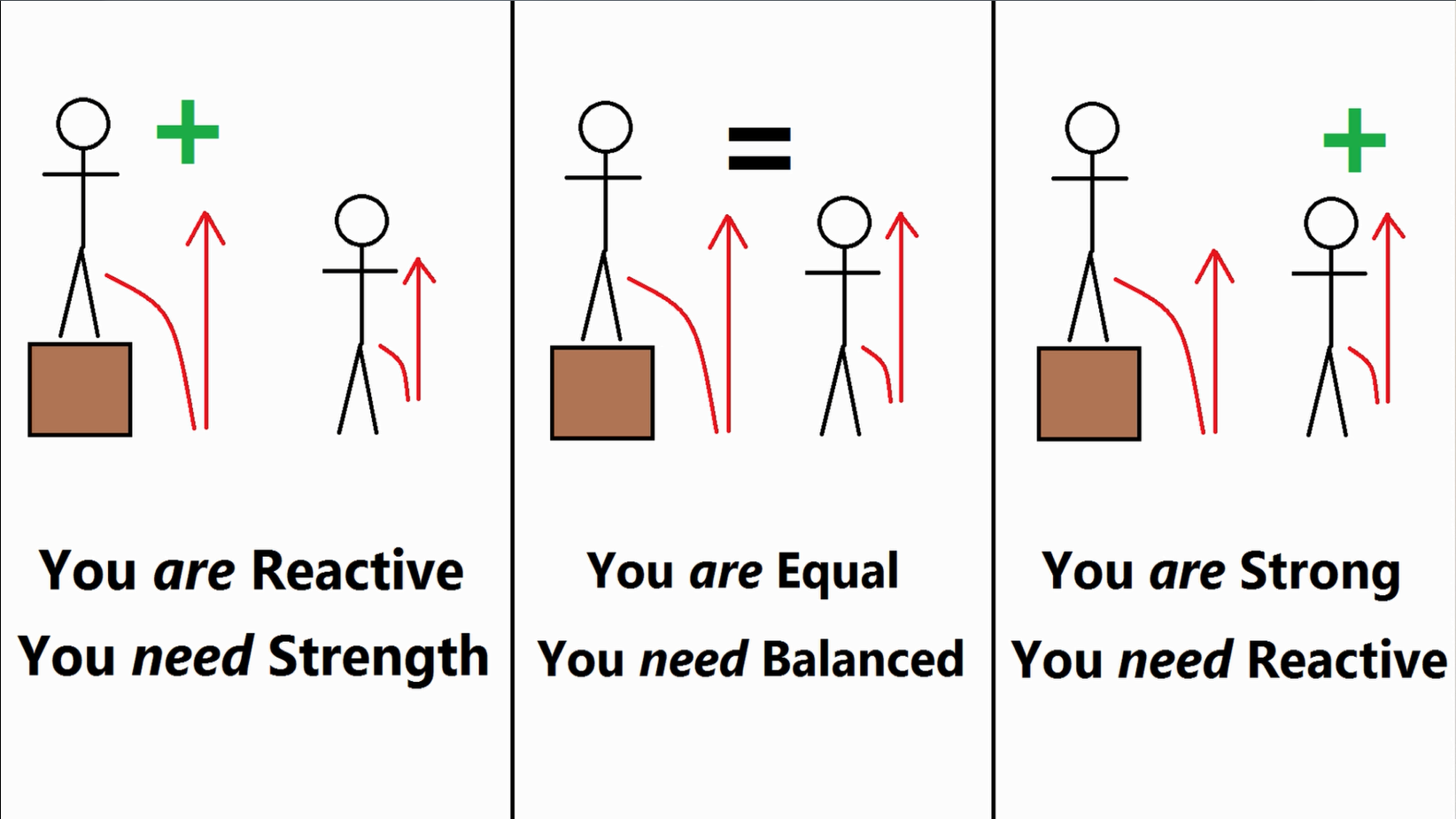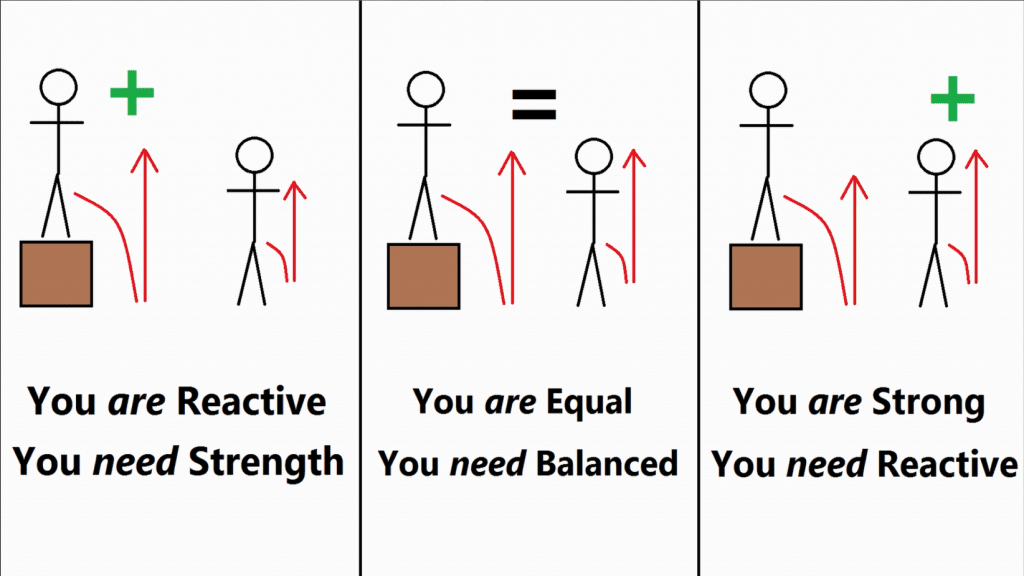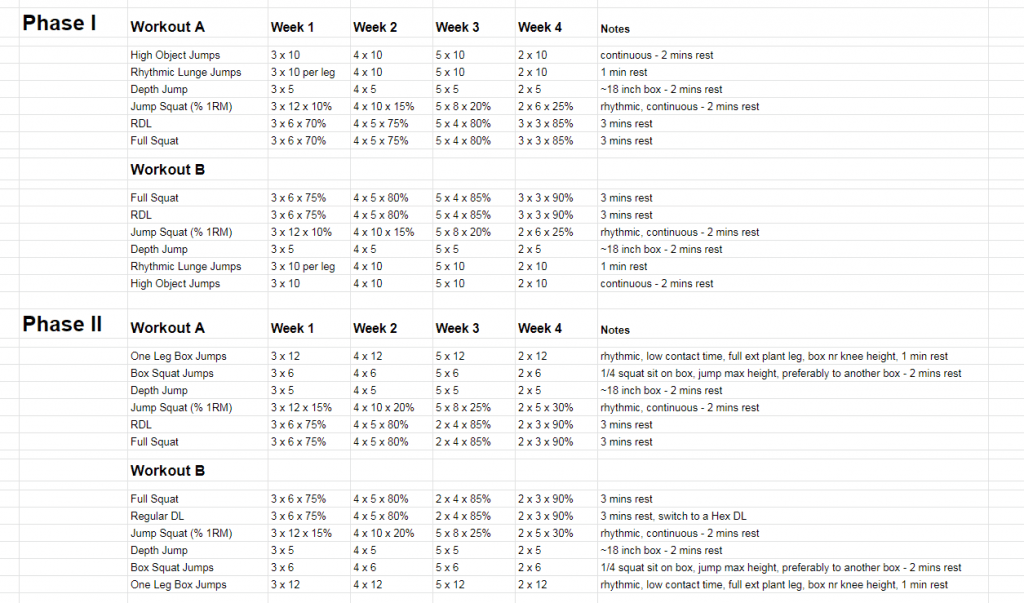
The Vertical Jump Development Bible is a comprehensive 148 page PDF by Kelly Baggett that can help you jump higher. There are chapters on strength training, Plyometrics, Rate of Force Development (RFD) and the Central Nervous System (CNS), followed by multiple programs. I tried one of these programs and shared the results below.
Training Concepts
It would feel incomplete to move straight into the program without sharing what I learned from reading the first 70 pages of the PDF. However, as it’s not the main point of this article, I will summarise in bullet points
- How much you are lifting relative to your 1 rep maximum should vary based on the goal of that exercise. Examples are Max. Strength (80+%), Strength-Speed (55-80%), Speed-Strength (25-50%) and Speed Training (0-25%)
- “Plyometrics” involve reactive strength, being able to absorb a force and reverse it, like a spring.
- Your CNS takes around 5 times longer to recover than the muscular system
- Depth jumps should take no longer than 0.5 seconds of ground contact time, ideally only 0.2 seconds. Advanced trainers can do 40 total reps, intermediates 25 reps, and they are so intense you shouldn’t do them all year round
- Strength jumpers are more likely using a 2 footed take-off, which uses 50% more quads
- Elastic jumpers are naturally bouncy and likely to be a single leg take-off, they use more glutes, hamstrings and calves
Choosing Your Program – The Test
I should point out that you need a minimum of a 1.5x body-weight back squat, otherwise that is the main priority before doing any of these programs. If you’re strong enough then here’s the other test:
- Do a regular Counter-Movement Jump from flat feet
- Next, try a 12 inch Depth Jump
- If the Depth Jump is higher, try an 18 inch Depth Jump.
- If your CMJ is higher than your depth jump, you’re probably strong but could do with more reactive ability using the Intermediate “reactive” Program
- If your depth jump was higher, and the 18 inch depth jump was better too, you are really springy but lack raw strength and need the Intermediate “strength” Program
- If, like me, your Depth Jump is roughly the same as your CMJ and never comfortably beats it, you do the Intermediate “balanced” Program

Intermediate Strength Training + Plyometric Workout
This is an 8 week program for someone with a blend of strength and some reactivity. There are two four-week phases (Phase I & II). Each involves just two workouts per week (Workouts A & B), and Workout B is simply Workout A with the exercises in reverse order.

Exercises (Phase I)
High Object Jumps: This is a repeat Counter-Movement Jump while reaching up at a target, like the rim. The reps are back to back but it’s more about maximising jump height than worrying about ground contact time between jumps.
Rhythmic Lunge Jumps: This is about getting a smooth rhythm but still some height. Start in a lunge position and explode up, switching legs in the air and landing the opposite way, then repeating for desired reps.
Depth Jumps: These are probably the most important exercise for vertical jump. I strongly recommend filming these and using video software to check you aren’t spending too long on the ground (aim to be closer to 0.2 seconds than 0.5 seconds). Step off a box (about 45cm/18 inches recommended), then react off the floor, and stick the landing from the resulting jump. The goal is maximum height and not spending too long on the ground.
Jump Squat: This will be a weighted squat with a defined % of your one rep maximum (1RM) squat. I prefer a Hex Bar (Trap Bar) as the weight isn’t across your back like it is with a barbell. This is about maximum intent and exploding as much as possible for each rep.
RDL: This is the Romanian Deadlift, a standard barbell exercise.
Back Squat: Going to correct depth (hip crease below top of knee in the bottom of the movement). Follow the % of 1RM in the program.
New Exercises (Phase II)
Repeated Single Leg Box Jumps: Jump onto a box below knee height and off again, keeping ground contact time short
Seated Box Jumps: Sit on a box or chair in a quarter squat position, and jump as high as possible, preferably onto another box.
Deadlift: Either barbell or Hex Bar, make sure you have solid technique and don’t compromise form when tired.
Results
Following 8 weeks of the Vertical Jump Bible took my running vert from 23″ up to 26.75″, a gain of 3.75″. This was slightly better than Vert Shock and meant I had a new personal best.

Conclusions
- Overall I was perhaps expecting more of an increase in my vertical, given I’d got up to a similar height the previous summer.
- The two session a week format was probably too cramped, I would have preferred the same volume to be spread over three different days each week.
- Unlike other programs I’ve done I never felt like I was close to injuring myself or having any joint problems.
- I also liked the inclusion of weights because it meant I could progress my strength while working on reactivity.
- There’s an excellent warm-up which I kept when doing my normal leg days as it really makes me feel fired up and ready to perform at my best.

